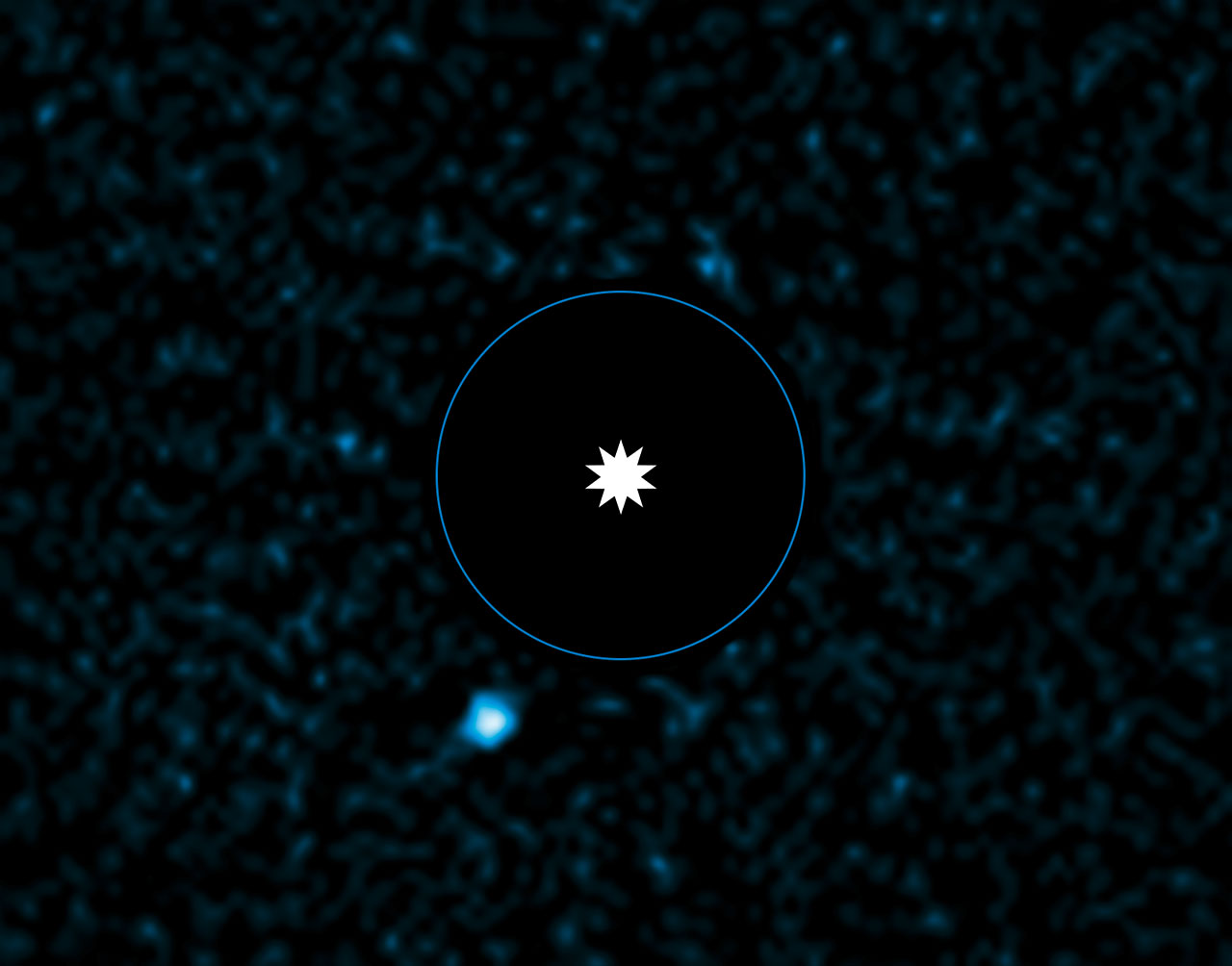|
Size: 82
Comment:
|
Size: 950
Comment:
|
| Deletions are marked like this. | Additions are marked like this. |
| Line 3: | Line 3: |
| * January 2014: LightestPlanet '''"Temperature constraints on the coldest brown dwarf known: WISE 0855-0714"''' * January 2014: LightestPlanet '''"A global cloud map of the nearest known brown dwarf"''' * June 2013: LightestPlanet '''"Lightest Exoplanet Imaged So Far?"''' * See ESO Press Release: http://www.eso.org/public/news/eso1324/ * Planet confirmed: http://lanl.arxiv.org/abs/1310.7483 * Disk Architecture revealed: http://arxiv.org/abs/1309.1675 |
|
| Line 4: | Line 10: |
| Lightest Exoplanet Imaged So Far? | {{attachment:eso1324a.jpg|alt text|width="800"}} '''A team of astronomers using ESO’s Very Large Telescope has imaged a faint object moving near a bright star. With an estimated mass of four to five times that of Jupiter, it would be the least massive planet to be directly observed outside the Solar System. The discovery is an important contribution to our understanding of the formation and evolution of planetary systems. ''' |
January 2014: LightestPlanet "Temperature constraints on the coldest brown dwarf known: WISE 0855-0714"
January 2014: LightestPlanet "A global cloud map of the nearest known brown dwarf"
June 2013: LightestPlanet "Lightest Exoplanet Imaged So Far?"
See ESO Press Release: http://www.eso.org/public/news/eso1324/
Planet confirmed: http://lanl.arxiv.org/abs/1310.7483
Disk Architecture revealed: http://arxiv.org/abs/1309.1675

A team of astronomers using ESO’s Very Large Telescope has imaged a faint object moving near a bright star. With an estimated mass of four to five times that of Jupiter, it would be the least massive planet to be directly observed outside the Solar System. The discovery is an important contribution to our understanding of the formation and evolution of planetary systems.
